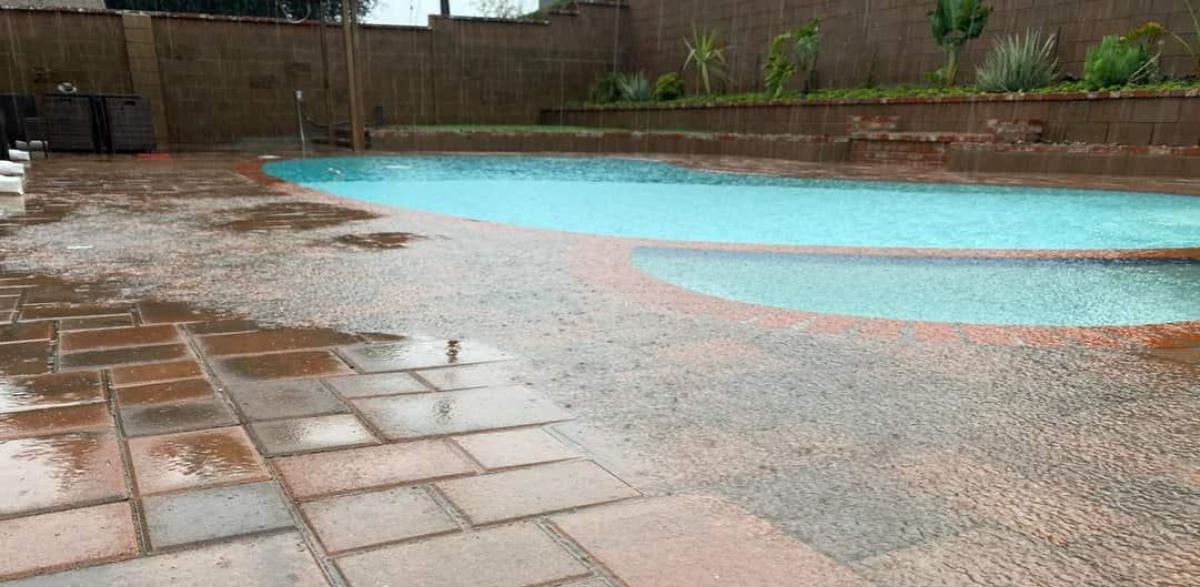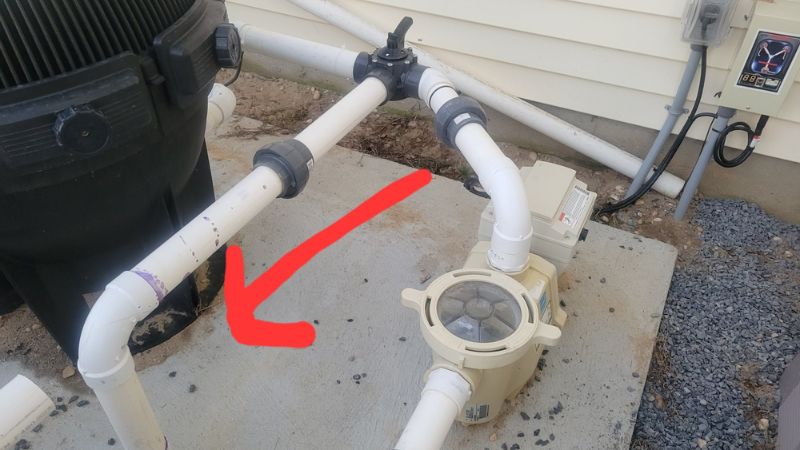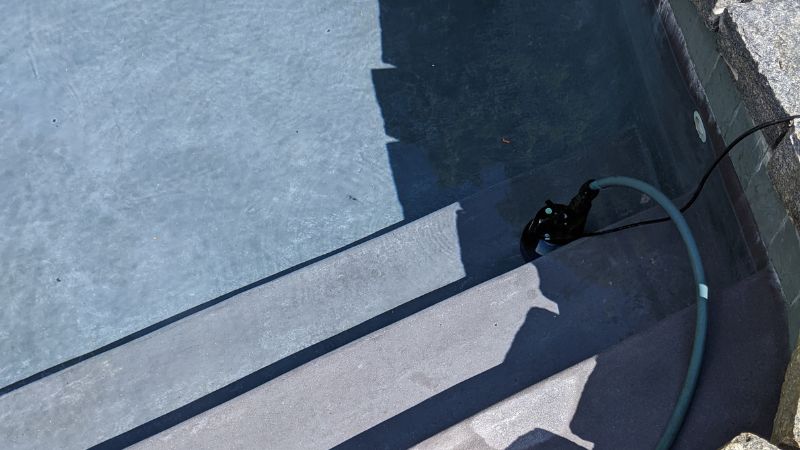What You Should Do When Your Pool is Overflowing From Rain

Rainy days are no fun for pool owners. Not only should you not swim, but rain can cause cloudy water that needs to be taken care of.
For the most part, not too much damage can happen from rain. However, when it rains so much that your pool starts to overflow, some issues might extend beyond unbalanced water.
For instance, water could get behind the liner in a vinyl pool which can cause issues. There is also the chance of water flooding the yard, or even worse, into your house depending on the setup.
Get Rid of Excess Water By Draining the Pool
It seems like a no-brainer, but the best way to stop your pool from overflowing is to drain the water.
It’s generally safe to drain when it’s actively raining. However, if there’s lightning or the rain is super heavy, you may have to wait. In rare instances, like hurricanes, you should wait until the storm is over.
There are different ways to get the water out of the pool depending on your pool’s system.
Drain Using Your Pool Pump (WASTE Setting on a Filter’s Multiport Valve)
The most straightforward way is to drain from your pool filter.
TIP: Only use your pump to drain to the skimmer basket level. You do not want your pump sucking air.
Depending on your filter type, most sand and diatomaceous earth (DE) filters have a multiport valve that allows you to alter water flow from the pool to your system.

The WASTE setting will send water directly from the pool and out into a waste line without going into the filter.
Simply turn off the filter, switch the valve to WASTE, and start draining.
Multiport valves are not used on cartridge filters. However, you can still drain from the pump using a 3-way diverter valve.
These pool valves have a handle that changes water flow from one pipe and then splits into two separate pipes. In this case, you can divert water to a waste line before it gets to the filter.

Using a Submersible Pump
Every pool owner should have a submersible pump. They super useful for closing the pool and draining below the skimmers.

All you need to do is attach a garden hose, or a bigger hose if the pump allows it, and set it to a spot where you can safely drain a large amount of water.
Create a Siphon
If you lose power during a storm, there is still a way to safely drain the pool. Utilizing some science (and maybe some magic), create a siphon.
For a siphon to work effectively, the destination where you’re draining the water must be at a lower elevation than the pool’s water level.
To begin, fill a garden hose with water, either from the spigot or by submerging it into the pool. Once full. The goal is to have as much water as possible in the hose.
After filling the hose, place one end into the pool. Then, position the other end of the hose at a location lower than the end that’s in the pool. This will create a siphon effect, allowing the water to be naturally drawn out continuously.
Taking Action Before Rain Hits
If you know the weather is calling for a lot of rain in your area, take the action and drain some water before it hits.
Even just a few inches can buy you some extra time from the pool overflowing.
When the Rain Stops, Test and Balance the Pool!
Make sure to test and balance the water chemistry if necessary after the storm has passed and the water is back to its normal, operating level
A little rain never hurt anybody. But a lot could ruin your day in a hurry! Be prepared for the next storm so your pool is one less thing to worry about!

